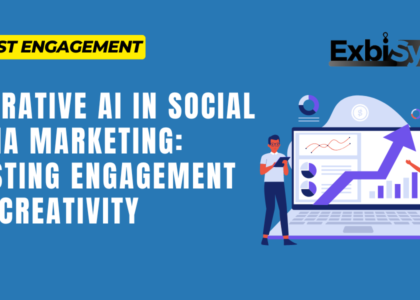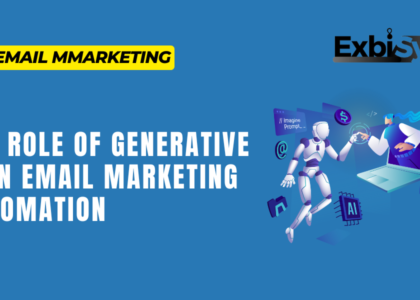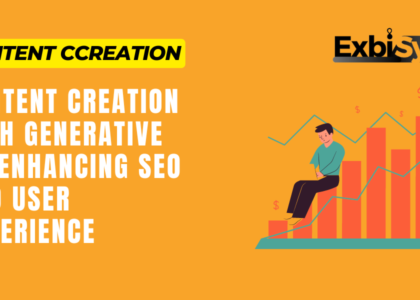As we move into 2024, the digital marketing landscape continues to evolve at a rapid pace. Businesses are adopting new technologies, platforms, and strategies to stay competitive and meet the ever-changing expectations of consumers. To ensure that your business thrives in this dynamic environment, it’s essential to stay updated with the latest trends that will shape the digital marketing industry in 2024.
Here are five key digital marketing trends that businesses can’t afford to ignore this year.
1. The Rise of Video Marketing: Dominating Consumer Engagement
Video marketing continues to be one of the most powerful forms of content, and its influence shows no signs of waning in 2024. Video content is more engaging, memorable, and shareable than any other type of content, making it an essential part of a successful digital marketing strategy.
Why Video Works:
- Visual and Emotional Appeal: Video is the best format for storytelling. It captures attention quickly and allows brands to communicate messages in a more emotional and human-centered way.
- Higher Engagement Rates: Studies consistently show that users engage more with video content than with static images or text. Videos increase time spent on a website, enhance social media engagement, and generate higher click-through rates.
- SEO Benefits: Search engines prioritize websites with video content, as they tend to keep users on pages longer. Including video on your landing pages or blogs can improve your ranking on Google’s search engine results pages (SERPs).
- Live Streaming: In 2024, live streaming will play an even bigger role in brand engagement, with platforms like Instagram Live, Facebook Live, and YouTube leading the way. Live streams allow businesses to engage with their audience in real time, creating a sense of community and urgency.
How to Implement Video Marketing:
- Invest in professional video content, such as product demos, customer testimonials, and how-to videos.
- Use short-form videos on platforms like TikTok, Instagram Reels, and YouTube Shorts to engage younger audiences.
- Incorporate live video for product launches, behind-the-scenes content, or Q&A sessions to increase transparency and engagement.
2. AI and Machine Learning: Enhancing Automation and Efficiency
Artificial Intelligence (AI) and machine learning have already transformed digital marketing by providing automation, personalization, and enhanced decision-making. In 2024, businesses that leverage AI will be able to scale their marketing efforts more efficiently while delivering better results.
Key AI-Driven Applications:
- Chatbots: AI-powered chatbots have become a vital customer service tool. These bots can answer common questions, provide personalized recommendations, and guide users through the sales funnel, offering a seamless experience 24/7.
- Programmatic Advertising: AI is revolutionizing how digital ads are bought and sold. Programmatic advertising automates the buying process, allowing for hyper-targeted ads that reach the right audience at the right time. AI-driven algorithms analyze user data and behavior to optimize ad placements in real time.
- Predictive Analytics: AI can analyze vast amounts of data to predict future customer behavior. By analyzing user patterns, businesses can better understand their target audience, forecast demand, and personalize content and offers to improve customer experience.
- Content Creation and Optimization: AI tools like GPT-3 can now assist in generating written content, optimizing headlines, and improving SEO strategies by identifying relevant keywords and content gaps.
How to Leverage AI:
- Use AI tools to automate routine tasks such as email marketing, ad bidding, and customer segmentation.
- Implement AI-driven chatbots to enhance customer service and engagement.
- Utilize predictive analytics to identify trends and optimize your marketing strategies for greater efficiency and impact.
3. Influencer Marketing 2.0: The Shift to Micro-Influencers
Influencer marketing has evolved, and in 2024, businesses are focusing more on micro-influencers than on high-profile celebrities. Micro-influencers, with smaller but highly engaged and niche audiences, are delivering better results for brands that want to connect with specific communities.
Why Micro-Influencers Matter:
- Trust and Authenticity: Consumers increasingly trust micro-influencers because they are seen as more relatable and authentic compared to celebrities. Their smaller followings allow them to interact more personally with their audience.
- Cost-Effectiveness: Partnering with a micro-influencer is more cost-effective than working with big-name influencers, and the return on investment (ROI) can be higher due to their targeted engagement.
- Niche Focus: Micro-influencers often have expertise in particular areas, such as fitness, beauty, tech, or travel. This makes them ideal partners for brands that want to reach highly specific audiences.
How to Work with Micro-Influencers:
- Identify influencers whose values align with your brand and who have a strong connection with your target audience.
- Collaborate on authentic content that resonates with their followers, such as product reviews, tutorials, or giveaways.
- Focus on building long-term relationships with micro-influencers to create a consistent and trustworthy brand presence.
4. Voice Search Optimization: The Future of SEO
As voice assistants like Amazon’s Alexa, Google Assistant, and Apple’s Siri become increasingly integrated into daily life, voice search is emerging as a crucial aspect of SEO. By 2024, voice search is expected to account for a significant percentage of all search queries, and businesses must optimize their digital presence to meet this growing trend.
Why Voice Search is Important:
- Natural Language Queries: People use voice search differently than traditional text-based search. Voice queries are more conversational and often longer, which means businesses need to focus on optimizing for long-tail keywords and natural language patterns.
- Mobile and Smart Device Usage: With the rise of smart home devices and mobile assistants, more users are conducting searches hands-free. Businesses that optimize for voice search will have a better chance of capturing these mobile and smart device users.
- Local Search Opportunities: Voice search is often used for local queries, such as “restaurants near me” or “plumbers in my area.” Optimizing your content for local SEO will help you capture more local traffic through voice search.
How to Optimize for Voice Search:
- Focus on long-tail keywords and natural language phrases in your content.
- Create conversational, question-based content that aligns with common voice search queries (e.g., “How to fix a leaky faucet?” or “Where is the nearest coffee shop?”).
- Optimize your Google My Business listing to improve local SEO and ensure your business appears in relevant voice search results.
5. Sustainability and Ethical Marketing: A Rising Consumer Priority
In 2024, sustainability and corporate responsibility are not just buzzwords but key drivers of consumer behavior. Today’s consumers—especially millennials and Gen Z—are increasingly seeking out brands that align with their values, particularly those related to sustainability and ethical practices.
Why Sustainability Matters:
- Brand Loyalty: Brands that demonstrate a commitment to environmental and social causes tend to build stronger relationships with their customers. Consumers are more likely to support businesses that share their values and contribute positively to the world.
- Regulatory Compliance: Governments and regulatory bodies are also pushing for more sustainable business practices, with new rules and incentives for companies that reduce their carbon footprint and adopt eco-friendly initiatives.
- Competitive Advantage: Brands that proactively incorporate sustainability into their marketing strategies can differentiate themselves from competitors and attract environmentally conscious customers.
How to Incorporate Sustainability in Marketing:
- Highlight eco-friendly initiatives in your marketing messages, such as reducing plastic use, sourcing sustainable materials, or supporting environmental causes.
- Engage in ethical storytelling by showcasing how your products and services positively impact communities and the environment.
- Partner with non-profits or environmental organizations to support sustainability-related causes and communicate these efforts to your audience.
Conclusion: Stay Ahead by Embracing the Future of Digital Marketing
The digital marketing trends of 2024 reflect a shift toward more engaging, personalized, and responsible approaches to reaching consumers. Whether through video marketing, AI automation, influencer collaborations, voice search optimization, or sustainability initiatives, businesses that embrace these trends will have a significant advantage in capturing attention and driving growth.
To stay ahead of the competition, businesses must adopt these trends into their digital marketing strategies and continuously adapt to new technological advances and consumer expectations. As the digital world evolves, staying informed and flexible will be the key to success in 2024 and beyond.





